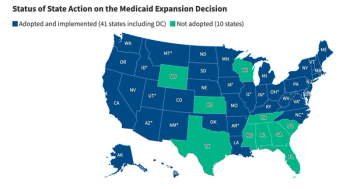
Parity law stirs up question of what constitutes parity
Some employers might need to adjust copay structures overall to achieve adequate compliance.
For many employers, the legislation passed unnoticed. For self-insured organizations, which fall under ERISA and are therefore exempt from state mandates, however, the federal legislation means rethinking the way they approach mental health benefits.
The Mental Health Parity and Addiction Equity Act, which ultimately came wrapped in the Emergency Economic Stabilization Act, requires health insurance plans that offer mental health coverage to provide the same financial and treatment coverage that they offer for physical illnesses. It does not require group plans to provide mental-health coverage.
The new legislation builds on the 1996 law and expands parity by requiring equality for deductibles, copayments, out-of-pocket expenses, coinsurance, covered hospital days, and covered outpatient visits. It applies for plan years beginning after October, although sponsors of collectively bargained plans have until Jan. 1, 2010, or the first plan year after the bargaining year terminates.
"The new federal parity law is an effort to have parity legislation apply to companies that are national in scope that had been exempt under ERISA," explains Edward Jones, PhD, senior vice president of ValueOptions' commercial division. ValueOptions is an independent behavioral healthcare company. "You have 80 million employees who are working for employers who are self-insured who have been exempt from state mandates."
The ERISA Industry Committee, which represents self-insured organizations, opposed the legislation, arguing that it erodes employer flexibility and could threaten other benefits. Some employers might be forced to raise copays or premiums for both mental-health and core medical benefits to comply, "because at the end of the day the numbers have to add up somehow," says Rohan Beesla, who handles health policy for the organization.
Experts such as Linda Weaver, a principal with Mercer's Health and Benefits Behavioral Health Specialty Group, generally expect compliance will increase overall health benefit costs by less than 2%. That said, increases will vary dramatically, depending on a number of factors, such as the existing disparity between benefits.
Organizations that experience cost increases of more than 2% in the first year-and more than 1% in subsequent years-can apply for an exemption. But taking advantage of that exemption could be an administrative headache, says Amy Bergner, a principal with Mercer's Washington Resource Group, noting that it is not clear whether exempt organizations would ultimately have to comply.
Newsletter
Get the latest industry news, event updates, and more from Managed healthcare Executive.





















































